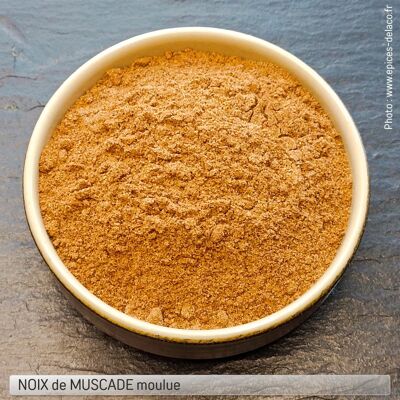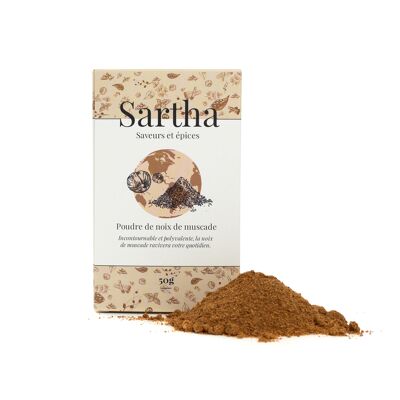


Nutmeg, native to Indonesia, is a spice that gives off a balsamic and lemony scent, with a slightly warm and sweet flavor, although sometimes a little bitter due to its essential oil content. Eugenol and geraniol are the molecules responsible for this complex flavor, the first reminiscent of cloves and the second adding a floral note. Nutmeg is extracted from the fruit of the nutmeg tree, Myristica sp, a member of the myristicaceae family. Originally from the Banda Islands in Indonesia, it was exported to Europe in the eighth century and is today grown mainly in Indonesia, Malaysia, Sri Lanka, the West Indies and Madagascar. Nutmeg comes in the form of a rounded nut, with an orange terracotta color. It is harvested, stripped of its flesh and aril, then ground into a slightly reddish brown powder. A fascinating historical anecdote is that nutmeg was a coveted object in the sixteenth century, leading to a land exchange between the Dutch and the English, giving rise to what is now the island of Manhattan in New York. Nutmeg offers various health benefits including detoxifying properties, promoting the elimination of toxins and relieving digestive disorders such as gas, abdominal pain and diarrhea. In addition, it improves blood circulation, which contributes to cardiovascular health. As an anti-inflammatory, it can relieve joint and muscle pain, while helping to decongest the airways and calm the symptoms of asthma and coughs. Nutmeg is commonly used to enhance the flavor of potato dishes, such as mash, gratins and Parmentier mince. It can also be added to soups, sauces (like béchamel) and stews. It is an essential ingredient for quiches, savory tarts and soufflés. In sweet dishes, it flavors jams, compotes, rice pudding, cakes and clafoutis. Nutmeg can also be used to flavor hot drinks like coffee and mulled wine. To fully reveal its flavor, it is recommended to combine it with lime and add it before serving or at the end of cooking to maximize its aroma.


















